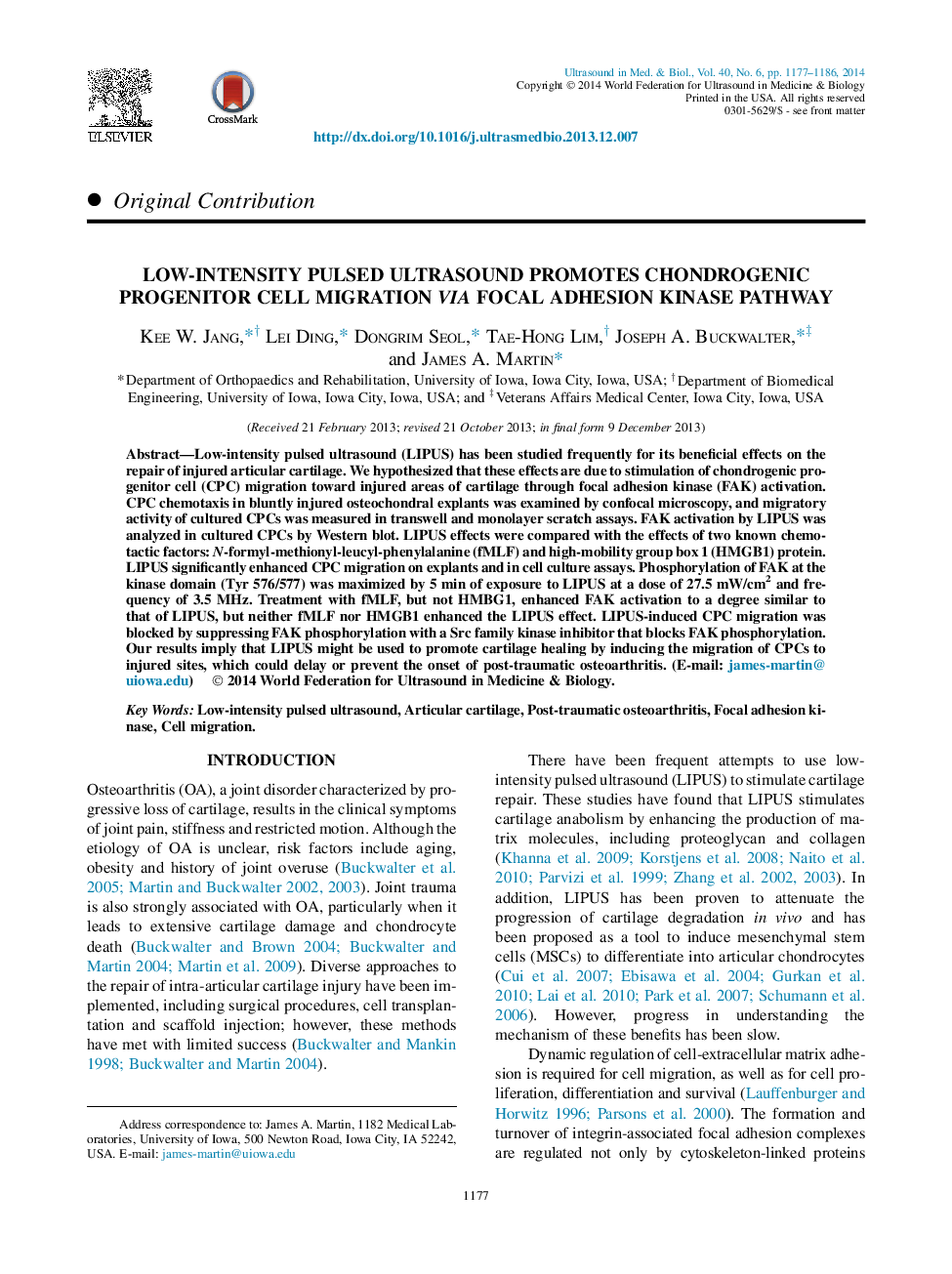| Article ID | Journal | Published Year | Pages | File Type |
|---|---|---|---|---|
| 10691748 | Ultrasound in Medicine & Biology | 2014 | 10 Pages |
Abstract
Low-intensity pulsed ultrasound (LIPUS) has been studied frequently for its beneficial effects on the repair of injured articular cartilage. We hypothesized that these effects are due to stimulation of chondrogenic progenitor cell (CPC) migration toward injured areas of cartilage through focal adhesion kinase (FAK) activation. CPC chemotaxis in bluntly injured osteochondral explants was examined by confocal microscopy, and migratory activity of cultured CPCs was measured in transwell and monolayer scratch assays. FAK activation by LIPUS was analyzed in cultured CPCs by Western blot. LIPUS effects were compared with the effects of two known chemotactic factors: N-formyl-methionyl-leucyl-phenylalanine (fMLF) and high-mobility group box 1 (HMGB1) protein. LIPUS significantly enhanced CPC migration on explants and in cell culture assays. Phosphorylation of FAK at the kinase domain (Tyr 576/577) was maximized by 5Â min of exposure to LIPUS at a dose of 27.5Â mW/cm2 and frequency of 3.5Â MHz. Treatment with fMLF, but not HMBG1, enhanced FAK activation to a degree similar to that of LIPUS, but neither fMLF nor HMGB1 enhanced the LIPUS effect. LIPUS-induced CPC migration was blocked by suppressing FAK phosphorylation with a Src family kinase inhibitor that blocks FAK phosphorylation. Our results imply that LIPUS might be used to promote cartilage healing by inducing the migration of CPCs to injured sites, which could delay or prevent the onset of post-traumatic osteoarthritis.
Keywords
Related Topics
Physical Sciences and Engineering
Physics and Astronomy
Acoustics and Ultrasonics
Authors
Kee W. Jang, Lei Ding, Dongrim Seol, Tae-Hong Lim, Joseph A. Buckwalter, James A. Martin,
